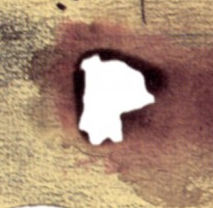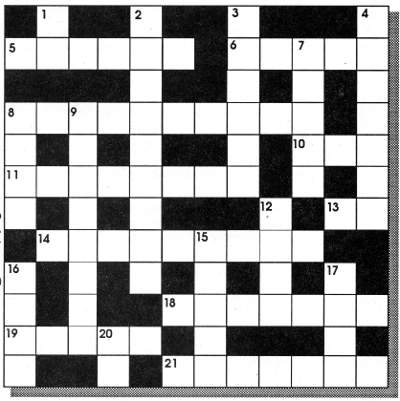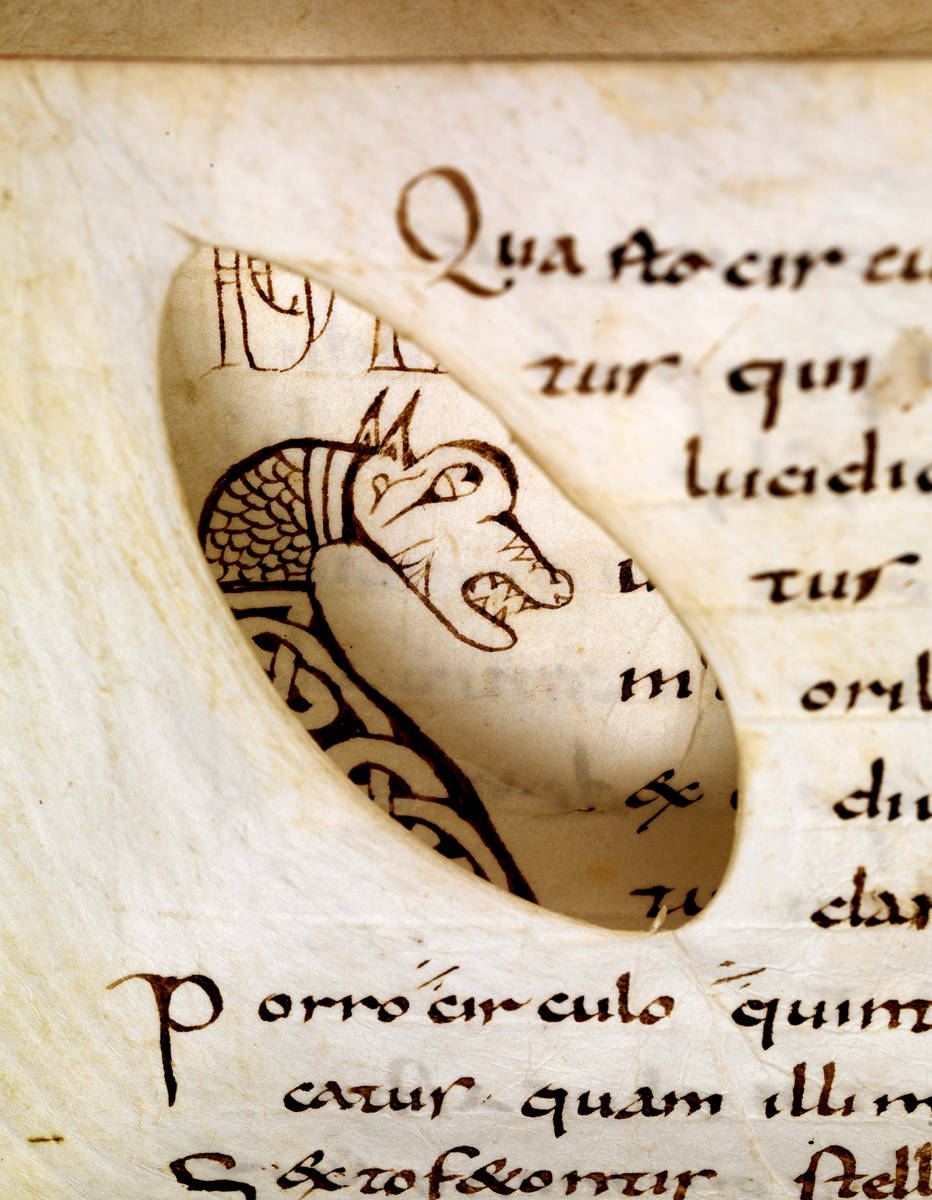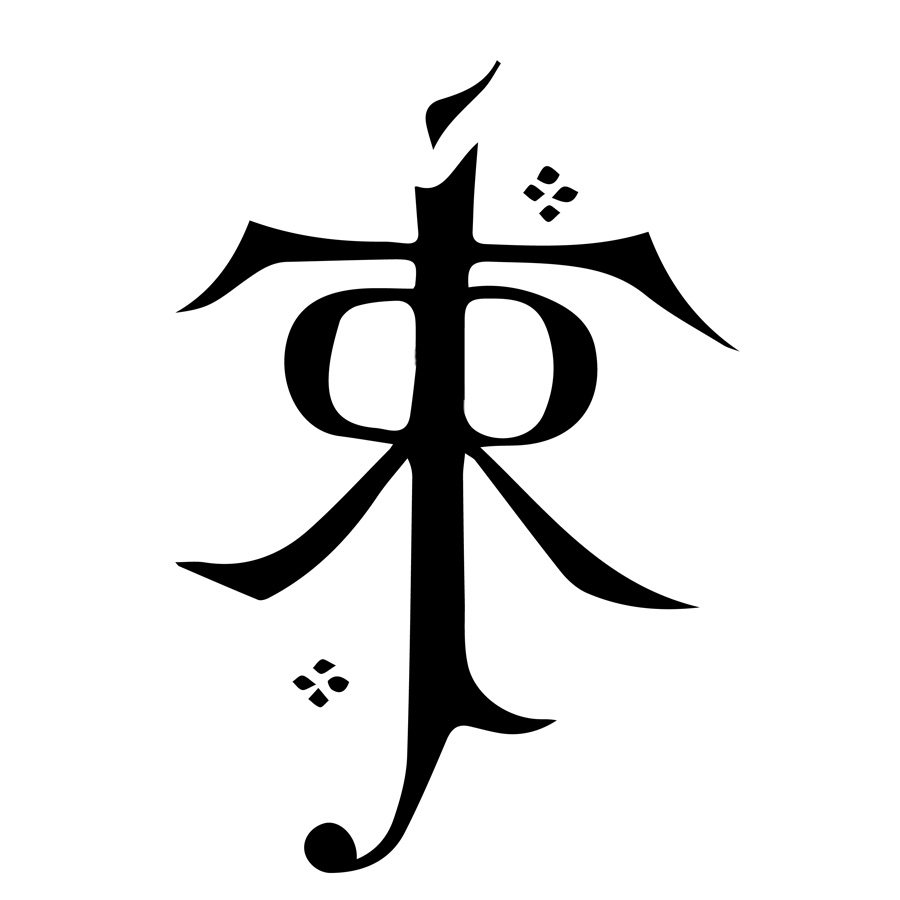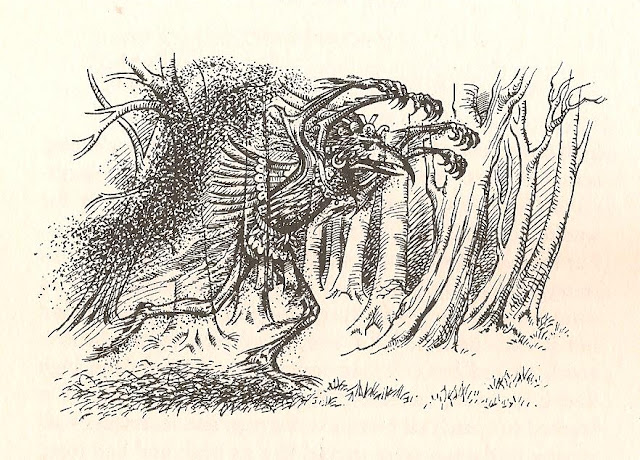But perhaps there is another way?
To resolve this perplexing issue perhaps we should abandon a focus on some much debated lines? Perhaps we should look elsewhere? Perhaps, somewhat surprisingly, we should consider the idea that Tolkien left us a picture of a Balrog? A tantalizingly vague one that all have missed - because it was intended to be a kind of hidden riddle. Yes, another ‘riddle in the dark’!
Of all the records that might have relayed Tolkien’s own visual impression of a Balrog, there is only one I have discovered which offers a viable possibility. And that pertains to the three loose leaves of the blood-stained, burnt and slashed Book of Mazarbul which Tolkien spent so much effort in forging.
Of the three, on the last parchment we have an image. A game changing image, perhaps!
I want you all to zoom in on the very last internal cutout and enlarge it if you can (it would be nice if someone could post a cropped enlargement on my behalf - for I do not have the necessary skill). By the way, I have purposely chosen the earliest example I can find (from the The Lord of the Rings Calendar of 1977) which thus has the least chance of having sustained damage. Certainly the manuscript pages are delicate artifacts.

What I see (and I am sure all of you will be able to visualize the same without difficulty) is the side profile of a strange upright creature. Clearly one can discern a head and two indistinct legs. On the left side is what looks like a long cloak (of mail?). And then on the right side we have the unmistakable jutting out of a ‘wing’.
Surrounding the cut-out is a black and brown zone which looks representative of ‘shadow’. So then using reasonable logic, what we have - must be a physical wing!
For those who have studied Tolkien’s works in great detail - an awareness must have arisen that our professor undoubtedly possessed a crafty humorous side. No one should deny his calligraphic skills, nor his propensity to bemuse the reader with the ‘Mooreeffoc’ effect. Then as a kind of subtle joke, did Tolkien leave teasing picture evidence of that which haunted the darkest dreams of the dwarves?
Now as well as the image itself, there are a number of other strong pointers that tell us that indeed this was meant to be Durin’s Bane.
......
The first four below, discuss leading clues within the forged manuscript.
(A) The image is of a semi-humanoid in a perfectly upright position. Meaning there is no need to rotate it to understand it. One might presume that the orientation was purposely effected. The odds of this being a random placement seem remote.
(B) The cut-out certainly isn’t a pattern one would expect from a burn, slash or stabbing. If it really was Tolkien’s idea of a ‘stabbing’ or ‘slashing’, it hasn’t penetrated through to the earlier pages - one must note! So one might deem that our particular ‘hole’ was specially created with purpose in mind. Indeed my close examination of the original at The Bodleian exhibition in 2018 revealed no indication that it was created by burning.
(C) The cutout of interest is very different to all the other internalized ones in any of the three parchment pages. Those other holes are of simpler shape, being generally ovoid and of ‘aerofoil’ cross-section. Whereas our cutaway is far more complex. Why, we must ask ourselves, is that?
(D) The singeing or ‘shadow’ is far more pronounced around our image of interest than around the other cutouts. Why? Was it purposely done to represent a ‘great’ shadow?
......
The next three examine evidence left in Fellowship text. For Tolkien, I believe, left some worded pointers too:
(E) Tolkien included, I believe, a magnificent pun. Using Gandalf’s end words - “There is nothing more.”, Tolkien slyly clued-in a double meaning. Of course we were meant to realize: ‘There is more in the nothing’ !
(F) Gandalf tells us that he did not have time to “puzzle out the last few pages”. Which, one must note, is the only use of “puzzle” or “puzzle out” in the entire The Fellowship of the Ring. Leaving the curious reader to contemplate and then discern that indeed there was a ‘puzzle’ present. In fact, I would say, left was a jigsaw puzzle where we, as the reader, were left to figure out the missing piece!
(G) An alert for the reader to be attentive is provided through Gandalf’s words. “Wait! Here is something:”
Which is then followed by an explanation “a large bold hand using an Elvish script.”
The first statement could have been a hint for the inquisitive to sit up and take notice. While the second was simply meant to be a confirming anagram, which when deciphered revealed the answer to who the last remnant of the besieged dwarves faced.
‘Plan gives us Balrog hidden in last char.’
Hmm ... so was this Tolkien’s great plan?
Surely then in deep consideration of items A to G, not withstanding pondering the image itself, the offered evidence is rather overwhelming.
Surely ‘the devil is in the detail’. And to employ a phrase Tolkien once used - surely we should be “giving the devil his due”?
Then what has been found and exposed is worth a laugh of admiration. A search for ‘The Holey Grail’ of Tolkien mysteries is at an end.
Yes - immortally resident for us:
‘In a hole in a parchment there lived a Balrog!’








